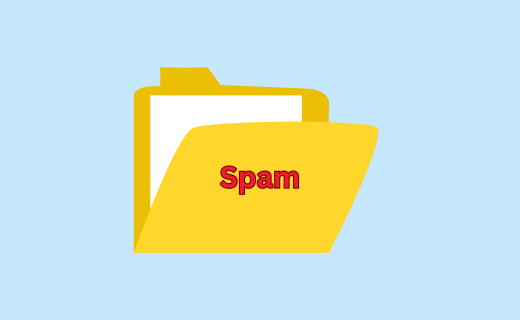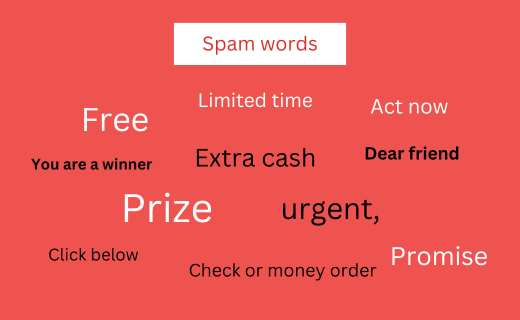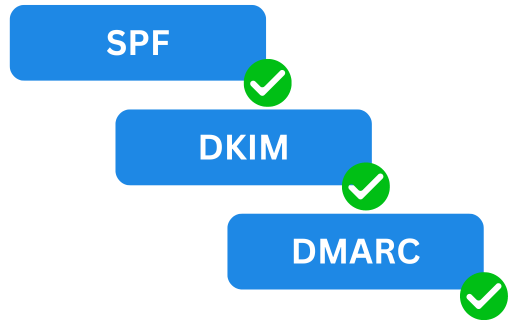Help article
Why Do My Emails Go to Spam?

Emails that go straight to spam can be frustrating and hurt your communication efforts. Therefore, it is essential to understand why do my emails go to spam so you can deliver the message to the intended recipients. The factors at play here are the content of the email, the sender's reputation, and technical configurations.
In this article, we will explore the reasons why your emails are going to spam and how you can prevent them from landing in the spam folder. Knowing these factors, you can optimize your email practice for better deliverability and audience engagement. Now, let's dive into the intricacies of delivering emails effectively.
What is Spam, and why do my emails go to spam?
Spam refers to undesired emails that journey through inboxes and cover the targeted recipients with undesired matters. Email deliverability relates to messages marked by email providers as suspicious or most likely dangerous due to various criteria; chief among them are sender reputation, mail content, and user engagement metrics.
Understanding spam will directly impact how most email providers filter messages for email security. By utilizing best practices and maintaining a positive sender reputation, you can ensure that most of your emails go through to the primary inbox and not into spam.
Check Your Email Content
This means that the content of your emails bears a lot on their destiny regarding spam folders. There shouldn't be an overabundance of exclamation marks or all-caps words, nor "spammed" language or phrasing like "free," "urgent," or "act now." The information contained shall be valuable and relevant to their recipients.
Your email should be well-formatted with clear text and minimum HTML coding. Always ensure that you have a recognizable sender name and, at the very least, a good subject line that agrees with what is in your email. By carefully drafting your messages, you can ensure that nearly all of your emails that pass the spam filters land in the primary inboxes of your audience.

The Importance of Email Authentication
Email authentication for Google or any other platform is essential in proving your messages to the recipient servers are valid. Linking sender identity to sender domain by authentication mechanisms like SPF, DKIM, and DMARC verifies your entity as a sender. It's essential to have correctly configured mechanisms to avoid spoofing and possible phishing attempts that may trigger resultant spam filters.
Authentication of your emails will improve deliverability and increase trust among ISPs and recipients while repelling DMARC errors.
Are You Following Email Sending Best Practices?
Following best practices will ensure that emails go through to inboxes and not to spam. Major ones include clear and relevant subject lines, avoiding huge images or links, and regularly cleaning the email list to update it.
A recognizable sender name and email address will further secure recipients' identification and trust in your emails. By following best practices, you ensure deliverability and engagement with your recipients. This chapter will outline these best practices and provide actionable tips on ensuring your emails comply with email standards and regulations.
Avoiding Email Spam Triggers
You want to avoid the usual triggers of most spam filters to keep your emails from being flagged for spam. Particular keywords, excessive punctuation (.), and "Act Now!" words and phrases can set off flags. Also, all-caps or even misleading subject lines can do the same thing. Keep in mind that it's better content in terms of relevance and clarity.
Further, you are from tactics ordinarily characteristic of the average spam, so you have more chances to get your emails through to an inbox rather than junk. Remembering and adhering to such guidelines will help maintain credibility and ensure messages reach the right audience.
The Role of Email Service Providers (ESPs)
ESPs have a considerable role in email deliverability. They manage the server infrastructure, authentication protocols like Sender Policy Framework , DomainKeys Identified Mail , DMARC , and standards compliance in sending emails. A practical choice for an ESP may make the difference between getting your email into the inbox and the spam box.
They allow monitoring of delivery rates, handling bounce management, and maintaining sender reputation. Understanding your ESP and fine-tuning the appropriate settings can help improve deliverability. The following section discusses the critical role of ESPs in the overall process and ways of selecting and using them for optimal email deliverability.

Building a Good Email Sender Reputation
You can avoid spam filters by having a positive sender reputation. ESPs and inbox providers judge your reputation based on several parameters, including email engagement, complaint rates, and best practice compliance. For an excellent sender reputation, continually send relevant and valuable content to your subscribers, respect their frequency preferences and unsubscribe requests, and act upon them promptly.
To understand performance assessment, check the feedback loops and metrics most ESPs provide frequently. One thing's for sure: if you put effort into transparency and being trustworthy in your email practices, you will be able to gain and maintain a strong sender reputation—one that gets your emails into the inbox rather than the junk folder.
Double-Check Your Email List Quality For Spam
Ensure that email lists are of good quality to avoid the spam filter. It is wise to regularly clean the list of invalid email addresses, duplicates, and inactive subscribers. Opt-in procedures should be maintained by confirming recipients' interest so no complaints can come. Segment your list according to engagement to successfully send content that matters.
Clean and keep your list relevant—do this often, and you'll see increased deliverability rates and reduced potential for triggering spam algorithms. Maintaining an updated and validated list will help keep reputation with the sender and placement in the inbox rather than in the junk folder. Such proactive work assures you of success in email marketing campaigns.
How Often Do You Send Emails?
The actual frequency at which you send emails might be what is making them hit spam filters. When emails are sent at a very high frequency, mainly when no segmentation or personalization is involved, spam filters can easily be triggered. Irregular sending patterns or long periods of inactivity might also raise flags.
It urges one to find a balance and stay consistent with email campaigns. Keeping the frequency of sending in a check with subscriber expectations and engagement rate is crucial for a positive sender reputation. This section explores strategies to optimize email cadence to bypass spam filters so that your messages land directly in your audience's primary inbox.
Mobile Optimization Matters
Most email users access their inboxes using mobile devices. Optimizing your emails for mobile viewing can be one sure way of passing spam filters. When non-optimized emails are opened through a small screen, they appear messy or complicated to navigate; hence, the users mark them as spam.
Keep deliverability and engagement in mind, focusing on responsive design and concise and easily readable content. Test your emails using different devices and clients. It is going to make sure that all of it will look nice everywhere. By being mobile-friendly, you bypass the filter of spamming and enhance the user experience through good engagement with your emails.
Monitor and Analyze Your Email Campaigns
The tracking and measurement of e-mail campaigns underpin the reasons many different e-mails make it to junk folders. Open and click-through rates give you an idea of recipient engagement; the bounce rate tells you about deliverability. Checking metrics frequently will enable one to identify trends or the beginnings of a problem or even make informed changes to strategy.
Use email analytics tools to gather information, interpret trends, and drive further campaign optimization for the best possible inbox placement. Monitoring and analyzing the data efficiently will also help you ensure a healthy sender reputation and get your emails straight into your audience's inboxes every single time.
Final Tips for Staying Out of Spam Folders
To ensure great deliverability rates for emails, avoiding the spam box requires the same amount of consistency in managing email performance metrics. Keep refining your email content to remain relevant and engaging to your target audience. Regularly updating and cleaning the email list will help remove inactive/invalid email addresses. You can use double opt-in procedures to confirm a subscriber's intention.
Stay on top of email industry standards and changes to regulations and compliance requirements to protect yourself in the best possible manner. Finally, ensure you maintain a good sender reputation through responsible sending practices. This goes a long way toward ensuring your emails do not fall inside spam boxes.
Conclusion
If you're going to do effective email marketing, you'll have to understand why do my emails go to spam. Paying attention to issues related to e-mail content, sender reputation, technical settings, or compliance with other best practices may improve deliverability and potential engagement from the target audience.
Periodic monitoring, optimization, and compliance with standard regulations keep one away from the spam box. It will ensure that all your email campaigns are as successful as possible.
Everything you need to power up your email game in one place.
Start now for free. No credit card required.
